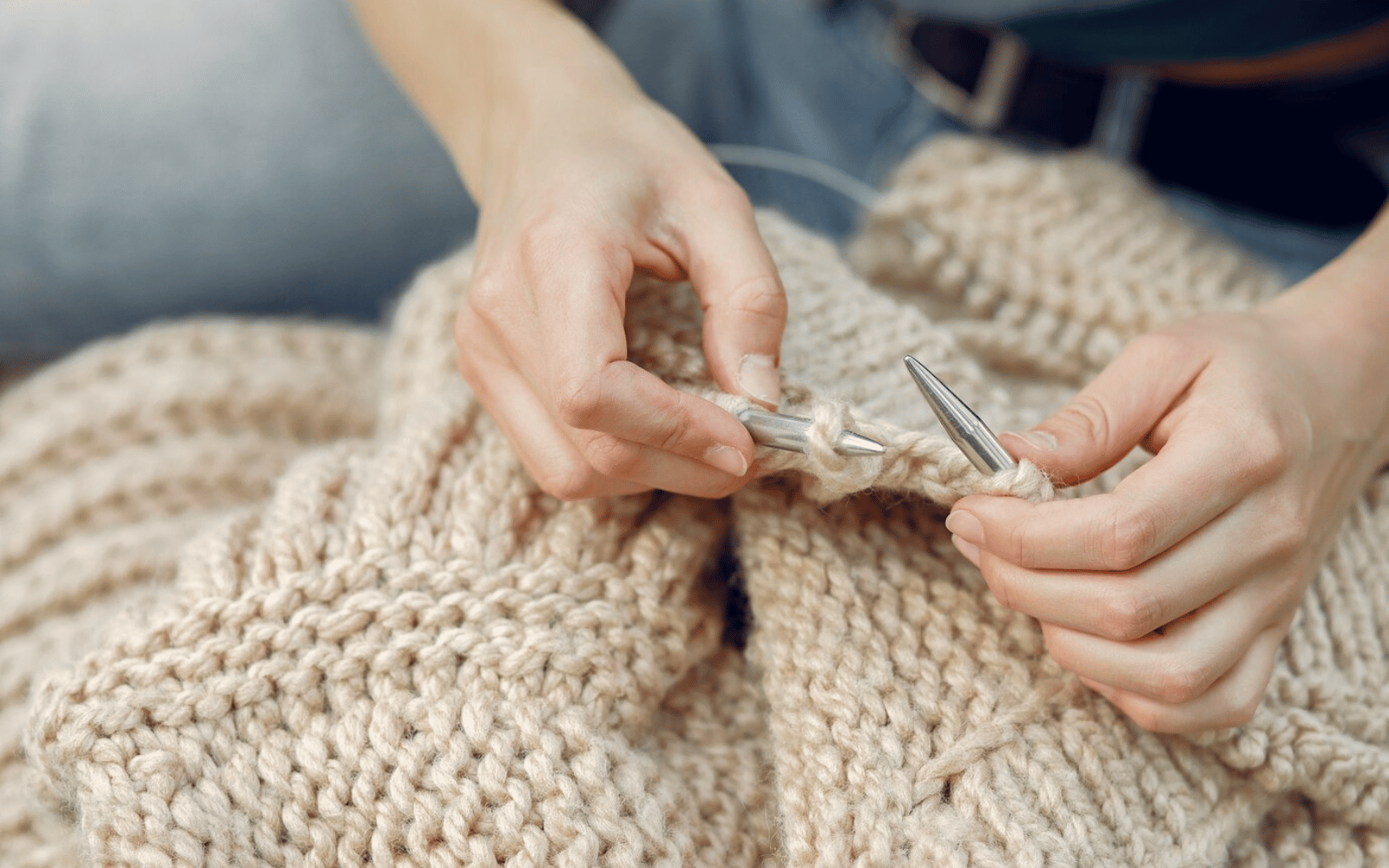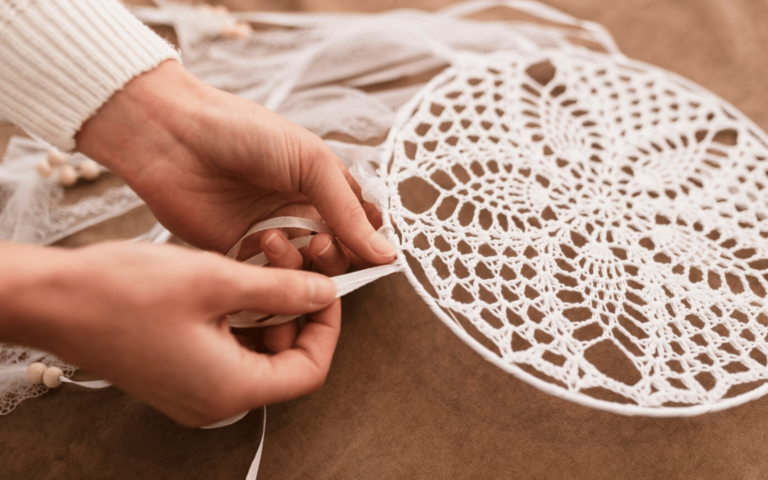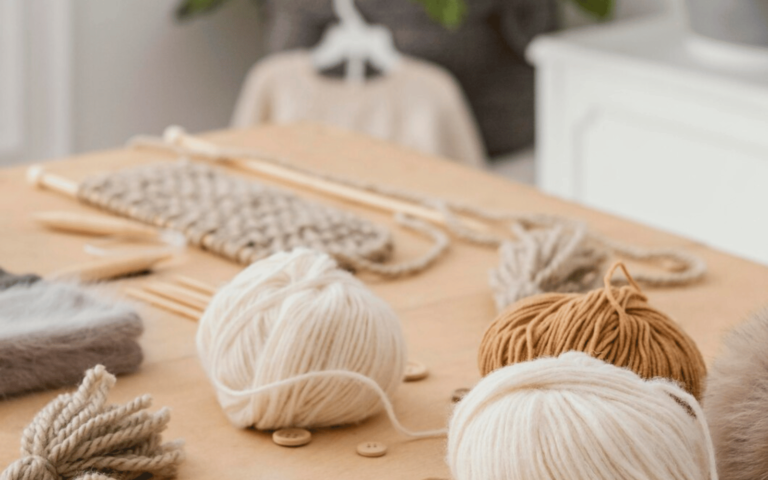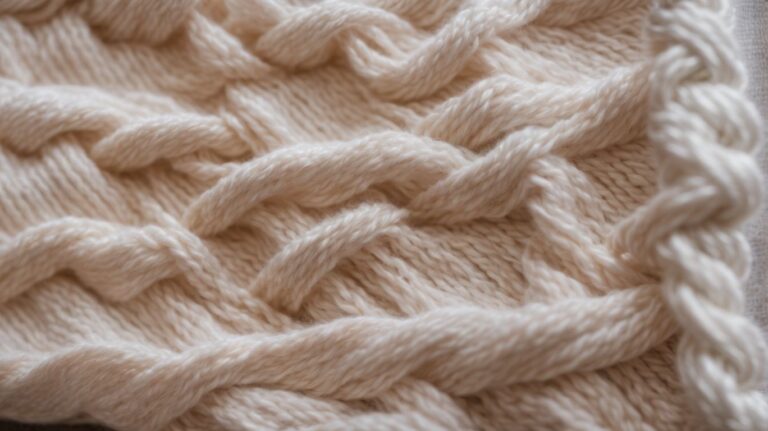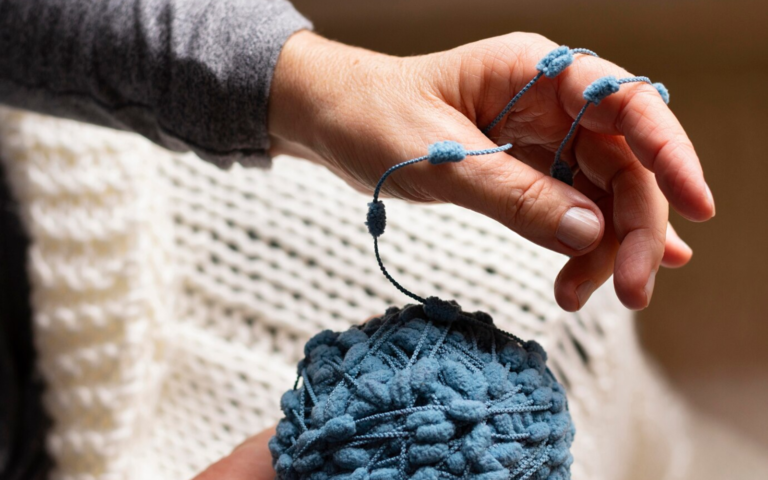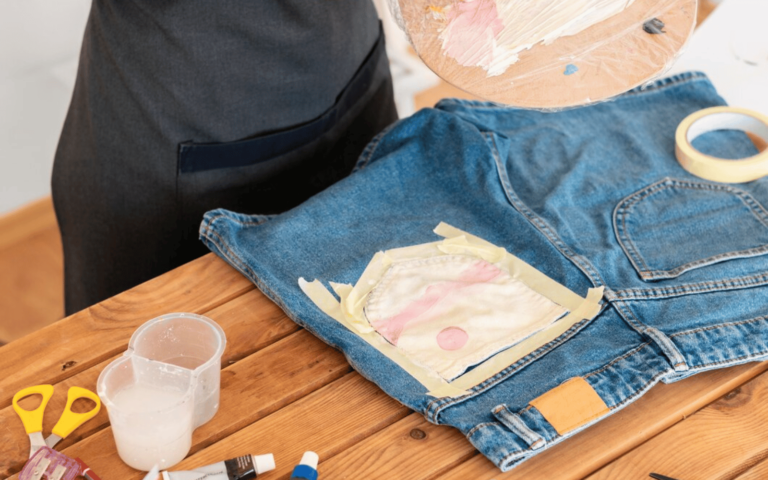How to Create a Yarn Mat: A Step-by-Step Guide
In the vast realm of crafting and artistic expression, few endeavors combine functionality and creativity as seamlessly as the creation of yarn mats. These humble yet versatile pieces not only serve as practical accessories in our homes but also stand as testaments to the beauty of craftsmanship. This comprehensive guide is an invitation to examine the artistry of creating your very own yarn mat—a journey that promises not only the joy of crafting but the satisfaction of having a unique, handmade piece to grace your living spaces. As we delve into the world of yarn mats, it’s essential to understand the enchantment they bring to any space. Far more than mere floor coverings, these mats are canvases waiting to be adorned with the colors, textures, and patterns that reflect your individuality. Crafting a yarn mat is a celebration of the meditative rhythm of crochet stitches, an analysis of color theory, and an opportunity to infuse your living spaces with warmth and character.
The art of crochet, when applied to mat-making, becomes a therapeutic endeavor. The repetitive nature of crochet stitches allows your mind to wander, providing a welcomed escape from the hustle and bustle of daily life. As the yarn transforms into intricate patterns beneath your fingertips, a sense of accomplishment and relaxation permeates the air. Crafting a yarn mat is not just a creative pursuit; it’s a mindful journey that intertwines the joys of crafting with the soothing cadence of the creative process. In an era dominated by mass-produced items, the allure of handcrafted pieces grows stronger. Creating your own yarn mat is a rebellion against the impersonal and a declaration of your unique style. It’s an opportunity to distance yourself from generic, store-bought décor and cultivate a living space that tells your story. Yarn mats, crafted with Attention and creativity, become cherished heirlooms—pieces that not only serve a purpose but carry the essence of your artistic spirit.
Beyond the tangible outcome of a finished mat lies the Liberation that comes with creating something functional with your own hands. Each stitch is a declaration of autonomy, a step away from consumer culture, and a stride toward self-sufficiency. As you embark on this journey, you’re not just crafting a mat; you’re nurturing a skill, cultivating patience, and fostering a sense of pride in your ability to transform raw materials into a functional work of art.
Understanding Yarn Selection
Selecting the right yarn is a fundamental aspect of yarn mat creation. The Sort of yarn you choose influences not only the aesthetics but also the durability and feel of the finished mat. Acrylic yarn, known for its affordability and wide color range, is a popular choice for beginners. On the other hand, cotton yarn offers a natural feel and breathability, making it suitable for mats in high-traffic areas. Wool yarn brings warmth and coziness, perfect for mats in areas where comfort is paramount.
Beyond the material, considerations for mat durability play a role in yarn selection. The thickness of the yarn contributes to the mat’s sturdiness, with thicker yarns providing more substantial results. Texture is another factor to ponder; smooth yarns may result in a sleek, modern look, while textured yarns can add depth and interest to the mat’s design.
Essential Tools for Yarn Mat Creation
Equipping yourself with the right tools ensures a smooth and enjoyable crochet experience. Crochet hooks are the primary tools for creating a yarn mat and choosing the right size is essential. Larger hooks work well with thicker yarns, producing an open and airy fabric, while smaller hooks are ideal for finer yarns and intricate patterns. Ergonomic crochet hooks, designed for comfort during extended crafting sessions, are worth considering to prevent hand fatigue.
Yarn needles, often overlooked but indispensable, come into play when weaving in ends and finishing touches. The Sort of needle depends on the yarn thickness and the desired finish. Having a selection of needles, including blunt and pointed varieties, ensures versatility in handling different yarns. Additionally, basic tools like scissors and stitch markers contribute to a seamless crochet process, allowing you to focus on the creative aspects of mat construction.
Basic Crochet Stitches for Mat Construction
Before diving into mat construction, familiarizing yourself with basic crochet stitches is paramount. The chain stitch serves as the foundation for many crochet projects, including mats. Mastering the technique of creating even and consistent chains lays the groundwork for a well-executed mat. Single crochet, a simple yet versatile stitch, forms the building blocks of the mat, providing a dense and sturdy fabric. Double crochet introduces height and texture, offering opportunities for creative design elements.
Achieving proficiency in these basic stitches involves practicing tension control and maintaining uniformity in stitch size. Consistency is key, especially when working on larger projects like mats, where irregularities can become more noticeable. As you progress through the foundational stitches, you’ll gain confidence and skill, setting the stage for more intricate and personalized mat designs.
Planning Your Yarn Mat Design
Planning is a pivotal step in the yarn mat creation process, influencing the final look and feel of the project. Choosing a pattern or design sets the tone for your mat, whether you opt for geometric patterns, floral motifs, or abstract designs. The versatility of crochet allows for endless possibilities, so consider your personal style and the intended placement of the mat in your home.
Sizing considerations play a role in planning, ensuring that the mat fits seamlessly into its designated space. Whether you’re envisioning a small accent mat for a cozy nook or a large area rug to anchor a room, determining the dimensions early on guides the entire crafting process. Adjusting the pattern or stitch count based on your chosen yarn and desired size ensures a harmonious outcome.
Advanced Techniques for Mat Enhancement
Once you’ve mastered the basics, delving into advanced techniques adds depth and sophistication to your yarn mat. Introducing texture with advanced stitches such as the bobble stitch or shell stitch elevates the mat’s visual appeal, creating focal points and points of interest. These stitches provide an opportunity to experiment with three-dimensional elements, turning your mat into a tactile masterpiece.
Incorporating colorwork into your mat design opens up a realm of creative possibilities. Stripes and color blocks add a playful touch, while more intricate Fair Isle techniques allow for intricate patterns and detailed designs. Advanced techniques not only enhance the aesthetics of the mat but also showcase your evolving skills as a crocheter. Experimenting with these techniques broadens your crochet repertoire and unlocks new dimensions in mat creation.
Joining Techniques for Larger Yarn Mats
For larger yarn mats, joining techniques become essential to seamlessly connect individual pieces or panels. Seamless joining methods, such as the slip stitch join or invisible join, contribute to a polished and cohesive appearance. These techniques eliminate visible seams, creating a continuous fabric that enhances the mat’s overall aesthetic.
Creating multi-panel mats introduces an additional layer of complexity. Stitching panels together requires precision to maintain uniformity and prevent distortions in the final piece. Attentionful consideration of stitch counts and pattern alignment ensures that the mat appears as a harmonious whole rather than distinct sections. Mastering these joining techniques expands your ability to create mats of varying sizes and configurations.
Blocking and Shaping Your Yarn Mat
Blocking and shaping are essential steps in the mat creation process, contributing to the overall polished look of the finished project. Blocking involves wetting the mat and then shaping it to the desired dimensions before allowing it to dry. This process straightens edges, evens out stitches, and enhances the mat’s visual appeal.
Shaping techniques are particularly relevant for achieving specific shapes, such as round mats or oval and rectangular variations. Proper blocking and shaping transform the mat from a functional piece to a work of art, emphasizing the intended design and creating a professional finish. These steps may require patience, but the results are well worth the effort in achieving a well-defined and aesthetically pleasing yarn mat.
Adding Finishing Touches
As your mat nears completion, attention to finishing touches becomes paramount. Weaving in ends is a step to ensure the mat’s durability and aesthetics. Properly woven ends contribute to a neat and polished appearance while preventing unraveling or fraying over time.
Consideration of edging options adds a final touch to your yarn mat. Whether you opt for a simple border to frame the piece or choose a decorative edging to complement the overall design, the edge of the mat serves as a finishing flourish. Experimenting with various edging techniques allows you to tailor the final look of the mat to your personal preferences and the intended style of your space.
Attention and Maintenance of Yarn Mats
Preserving the longevity and appearance of your yarn mat involves proper Attention and maintenance. Understanding washing and cleaning guidelines is essential, as different yarn Sorts may require specific Attention instructions. Choosing suitable cleaning agents and adopting appropriate drying methods ensures that the mat retains its quality over time.
Inevitably, mats may encounter wear and tear, requiring occasional repairs and restoration. Knowing how to patch holes, reinforce weak points, and address other common issues allows you to extend the lifespan of your mat. By incorporating these maintenance practices into your routine, you ensure that your yarn mat remains a cherished part of your home decor for years to come.
Showcasing Your Yarn Mat Creations
Documenting your yarn mat creation process not only serves as a personal record but also allows you to share your creative journey with others. Creating a crochet journal enables you to track progress, experiment with new techniques, and reflect on the evolution of your skills. Sharing your mat-making journey on social media platforms connects you with a community of fellow crafters, providing inspiration, support, and an avenue for showcasing your unique creations.
Participating in crafting communities, both online and locally, enhances your overall mat-making experience. Engaging in forums, joining groups, and attending craft clubs expose you to diverse perspectives, valuable insights, and a wealth of knowledge within the crafting community. The support and camaraderie found in these communities foster a sense of belonging and inspire continued creativity.
Navigating the Durability and Care of Yarn Mats
For enthusiasts who invest time and effort into crafting yarn mats, understanding the best practices for maintaining the longevity and appearance of these creations is crucial. The resilience of a yarn mat is largely influenced by the quality of materials used and the techniques applied during its construction. It is advisable to select yarns that are not only vibrant and visually appealing but also possess high endurance against wear and tear. Materials such as acrylic, cotton, or wool blends are recommended for their durability and ease of care.
Once your yarn mat is complete, the next step is to ensure it remains in pristine condition. Regular maintenance is key to preserving the aesthetic and structural integrity of the mat. Start by implementing a routine cleaning schedule. Light vacuuming or gentle brushing can remove surface dust and debris, preventing the fibers from becoming matted or discolored. For deeper cleans, a mild detergent solution can be used. Soak the mat briefly and then rinse thoroughly to eliminate any soap residue, which can attract more dirt if left uncleaned.
When it comes to drying your yarn mat, avoid high heat, as it can shrink or warp the fibers. Instead, opt for air drying in a well-ventilated area where the mat can lay flat. This method helps in retaining the shape and preventing any unwanted stretching or compression of the yarn. Periodically flipping the mat during the drying process ensures even evaporation of moisture.
In addition to cleaning, regular inspections of your yarn mat can prevent minor issues from becoming major problems. Check for any loose ends or signs of wear, especially in high-traffic areas. Early detection of thread pulls or frayed edges allows for timely repairs, thus extending the mat’s usability. If damage is noted, simple stitching or patching techniques can be employed to restore the affected areas, ideally matching the original yarn for consistency.
Storing your yarn mat correctly when not in use is equally important to maintain its condition. Avoid damp or poorly ventilated spaces to prevent the growth of mold and mildew. Rolling the mat loosely rather than folding it can minimize creases and stress on the woven structure. Additionally, wrapping the mat in a breathable fabric will shield it from dust and other environmental factors that could degrade its materials over time.
By implementing these straightforward care and maintenance strategies, your yarn mat can remain a functional and decorative element in your home for years. Whether used as a cozy addition to your living space or as an artistic display, the longevity of your yarn mat is significantly enhanced through diligent care, allowing it to continue serving as a testament to your crafting skills and aesthetic sense. By treating these creations with the attention they deserve, you not only preserve their beauty but also their value as handcrafted items.
Outcome
Where threads of creativity intertwine with the practicality of daily life, creating your own yarn mat is a journey that transcends the boundaries of mere functionality. As we conclude this comprehensive guide, let’s reflect on the multifaceted rewards embedded in the art of crafting a yarn mat – a process that goes beyond the creation of a household item to become a transformative experience.
Crafting a yarn mat isn’t just about hooking yarn together; it’s about weaving memories, creativity, and self-expression into every stitch. The journey involves more than the mechanical repetition of crochet techniques; it’s a tactile meditation, a rhythmic dance of hands and yarn that allows you to escape into a world of endless possibilities. The tactile satisfaction of creating something tangible with your hands, something that will grace your living space, adds a deeply personal dimension to the entire process.
Moreover, the creation of a yarn mat is a celebration of resourcefulness and sustainability. By repurposing leftover yarn from previous projects or selecting eco-friendly materials, you contribute to a more conscious approach to crafting. In a world where mass production often overshadows the unique stories embedded in handmade items, your yarn mat becomes a statement of individuality and a testament to the importance of mindful creation.
The significance of your yarn mat extends beyond the confines of your home. It becomes a canvas for your artistic expression, a functional piece of art that not only adds warmth and texture to your space but also serves as a conversation starter. Whether you choose vibrant colors to evoke joy or subtle hues to create a serene atmosphere, your yarn mat reflects your personality, taste, and the love invested in its creation.
As you step back and admire the finished mat, remember that it’s more than a household accessory; it’s a tangible representation of your skills and creativity. The challenges you overcame while learning new stitches, the patience you cultivated through intricate patterns, and the joy that accompanied each completed row are all woven into the fabric of your yarn mat.
In this Outcome, let’s not forget the emStrenghting aspect of sharing your creation with the world. By showcasing your yarn mat on social media or within crafting communities, you not only inspire others to embark on their creative journeys but also become part of a vibrant tapestry of makers. The connections forged through shared passion and the encouragement exchanged within these communities amplify the joy derived from the craft.
In essence, creating a yarn mat is a journey of self-discovery, a celebration of sustainability, and a test of the boundless realms of creativity. It’s an opportunity to transform the mundane into the extraordinary, turning a simple skein of yarn into a functional masterpiece that reflects the beauty of your unique perspective. As you continue your crafting adventures, may each stitch be a reminder of your artistic prowess, and may each mat be a testament to the endless possibilities unlocked by your creative spirit.
In the end, the true magic lies not just in the finished yarn mat but in the moments of inspiration, the shared experiences, and the continuous evolution of your craft. So, with a heart full of gratitude for the journey shared, continue to create, analyze, and infuse your surroundings with the timeless elegance of handmade artistry. Happy crafting!

